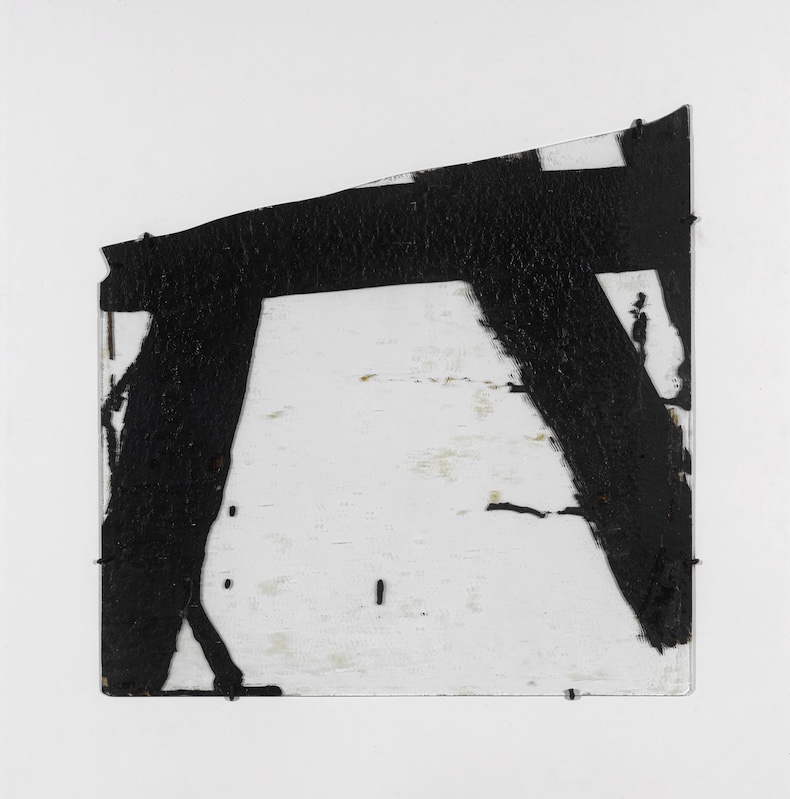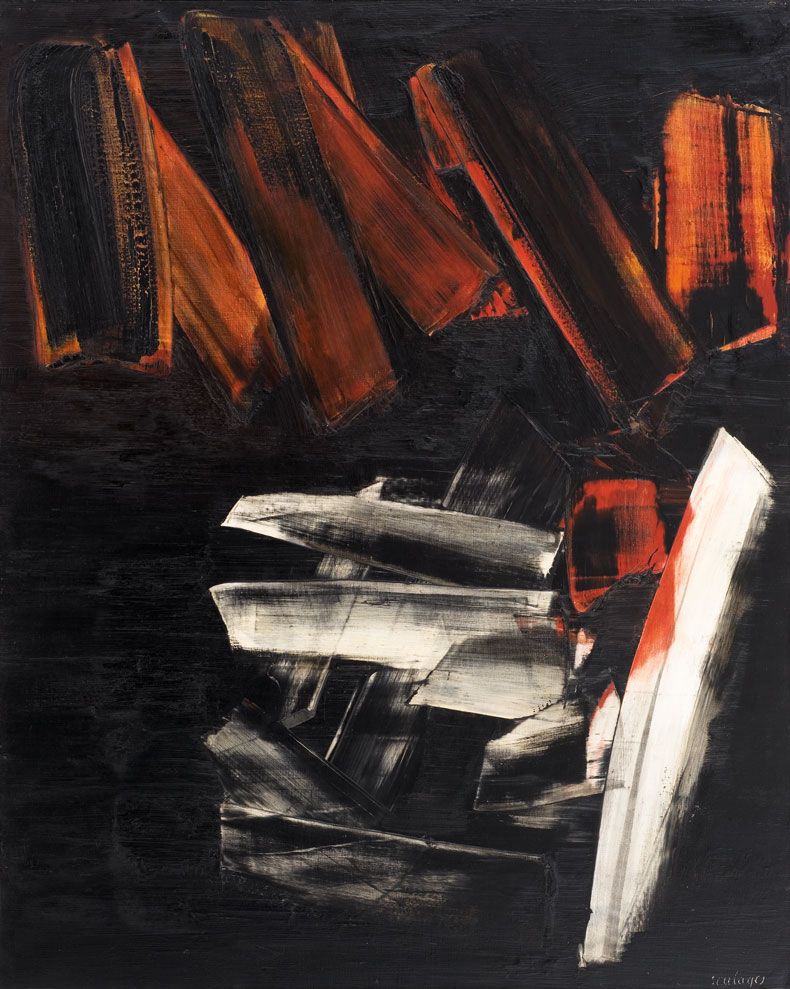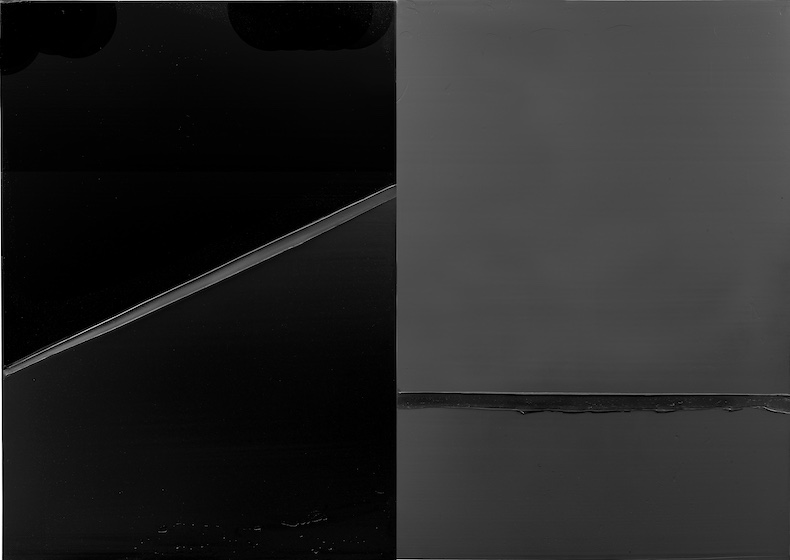From the October 2025 issue of Apollo. Preview and subscribe here.
Pierre Soulages (1919–2022) was a prolific artist whose work could fill a significant number of museums (there are some 500 paintings alone in the Musée Soulages, founded in 2014 in Rodez, southern France, where the artist was born). The Musée Fabre in Montpellier has a modest 20, but many of them are large and they are currently bulked out with loans from several other galleries for the exhibition ‘La rencontre’. It’s a meeting – or a reunion – of Soulages paintings, nearly all of which are dominated by the (non-) colour black. Montpellier lies within sight of the Mediterranean coast and has more claim to the title ‘City of Light’ than Paris itself, so it might seem perverse to choose this location to display all these tableaux of darkness. But in fact, the glossy black used in the paintings captures and reflects the light – and Soulages was more practised than anyone else in presenting an entire spectrum of black, ranging from dust-dull to slick.
The earliest paintings here dramatise the exclusion of light. Goudron sur verre (‘Tar on glass’) is the title shared by two works from 1948. Both consist of broken shards of glass over which swipes of black paint have been forcefully applied. In Encre sur papier (1949) background light seems to enter the painting from behind a pair of shutters that have partly disintegrated. For Soulages, the view from and of an obscure interior is more interesting than whatever lies outside. He wants to remain in the dark.

The shards of glass and shutter-like forms merely imply the arrangements of a domestic interior, just as the stacks of thick bar-like forms that begin to gather in the paintings of 1959 and 1960 are not representations of, but allusions to, the groups of menhirs that characterise the monumental architecture of French prehistory. The top half of Peinture 162 x 130 cm, 2 novembre 1959 resembles a row of leaning, perhaps even toppling, menhirs, while the bottom half gathers together a set of similar forms in both vertical and horizontal arrangements. Ten years later, in Peinture 202 x 327 cm, 17 Janvier 1970, Soulages appears to be monumentalising a simple set of palings, with seven verticals and a single segmented horizontal. This arrangement also recalls the bars of a cage, which raises the question: on which side of the bars do the viewers find themselves? At the end of the same year, in Peinture 200 x 285 cm, 12 décembre 1970, an almost equally large format is used to contain what looks like a megalith consisting of dislocated barriers and arches. This counterpointing of the domestic and the megalithic provides a context for Soulages’s titles, which recall diary entries. Individual human scales of significance are placed in relation to much larger temporal rhythms. Houses are containers that may admit, or exclude, natural light on a diurnal and seasonal basis. The monumental architecture of the Neolithic period, on the other hand, tracks the cycles and relations of celestial light sources over generations, as well as the more frequent, seasonal shifts between light and dark.

There is a risk in many of these paintings of reading their chromatic statements as readings of light levels. But Soulages’s own method of using titles to register the time of composition makes it inevitable that we think of each work as a carefully calibrated response to the particular circumstances of its making. Some works seem to revel in the drama of a moment, while others might be responding to a long-drawn out process. The early work Peinture 81 x 60 cm, 28 novembre 1955 is placed near the much later Peinture 130 x 92 cm, 24 juillet 2011. Both paintings are in portrait format; the earlier work resembles a small window opening that has been barricaded by a patchwork of vertical and horizontal tile-shapes, leaving just one gap sufficient to allow what is perhaps a yellowish candle light to glow through. This peephole effect almost begrudges the admission of light in a painting whose every brushstroke seems intended to mount a barrier against it.
The later work offers a dramatic counterpoint more than half a century later. It presents a series of brick-like elements wedged together horizontally, with gaps opening up everywhere to allow the light to seep through, hazily towards the top, radiantly towards the bottom. The viewer is brought up close to this porous barrier, which both screens and transmits what feels like a pivotal moment in the dying of the light. It is a wonder that Soulages should spend a lifetime painting the same phenomena, converting these natural conditions into abstract forms – and not just tirelessly but in ways that genuinely reinvigorate the project.
A cursory examination of the works of Soulages might make him seem like the kind of character Italo Calvino could have dreamt up – the man who spent his entire life trying to paint the same painting over and over again – but this exhibition, when approached with careful and patient attention, reveals him to be a scrupulous observer of the clair-obscur, for whom any shift in the balance of light and dark is enough to trigger an unprecedented new work.

‘Pierre Soulages: La rencontre’ is at the Musée Fabre, Montpellier until 4 January 2026.
From the October 2025 issue of Apollo. Preview and subscribe here.
